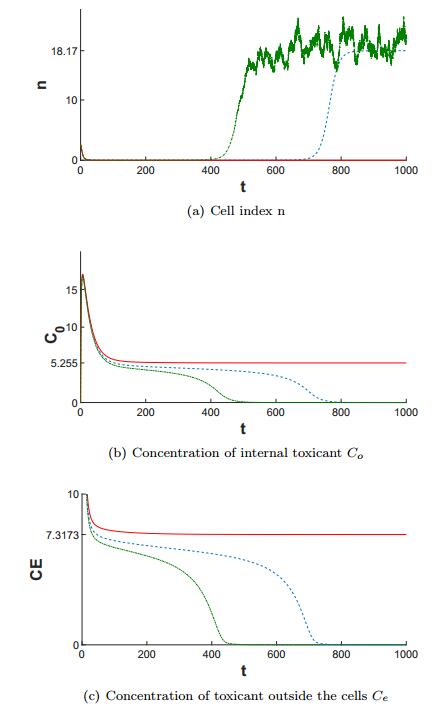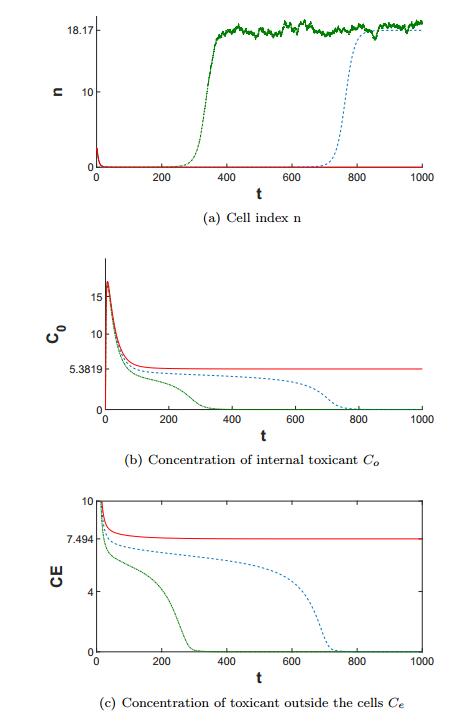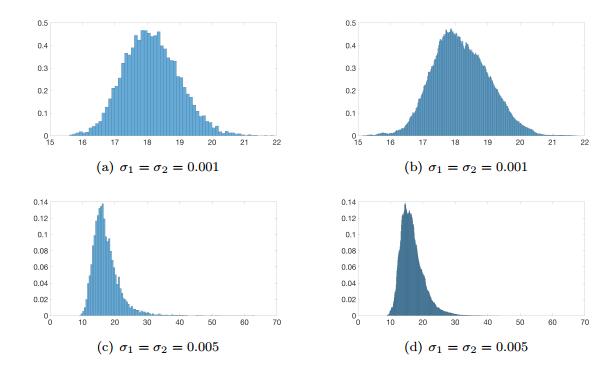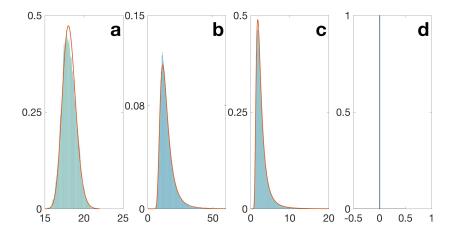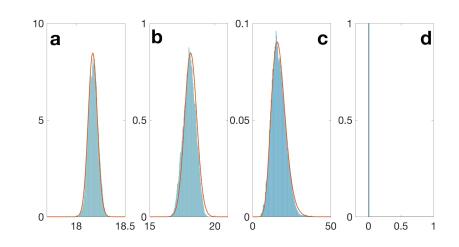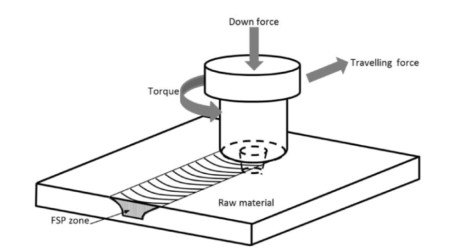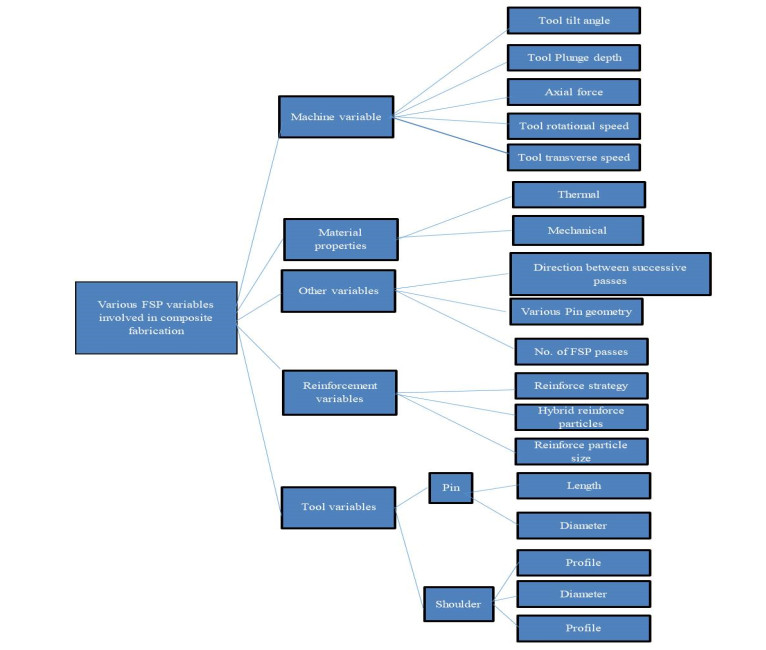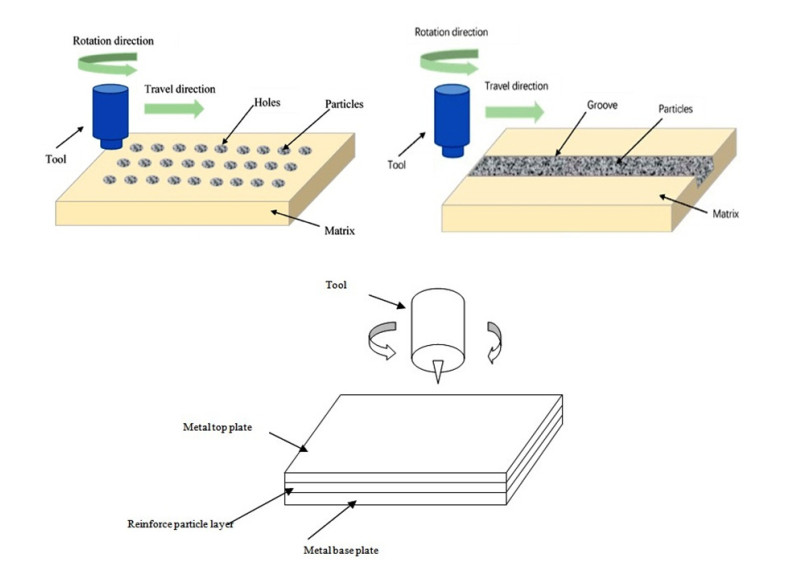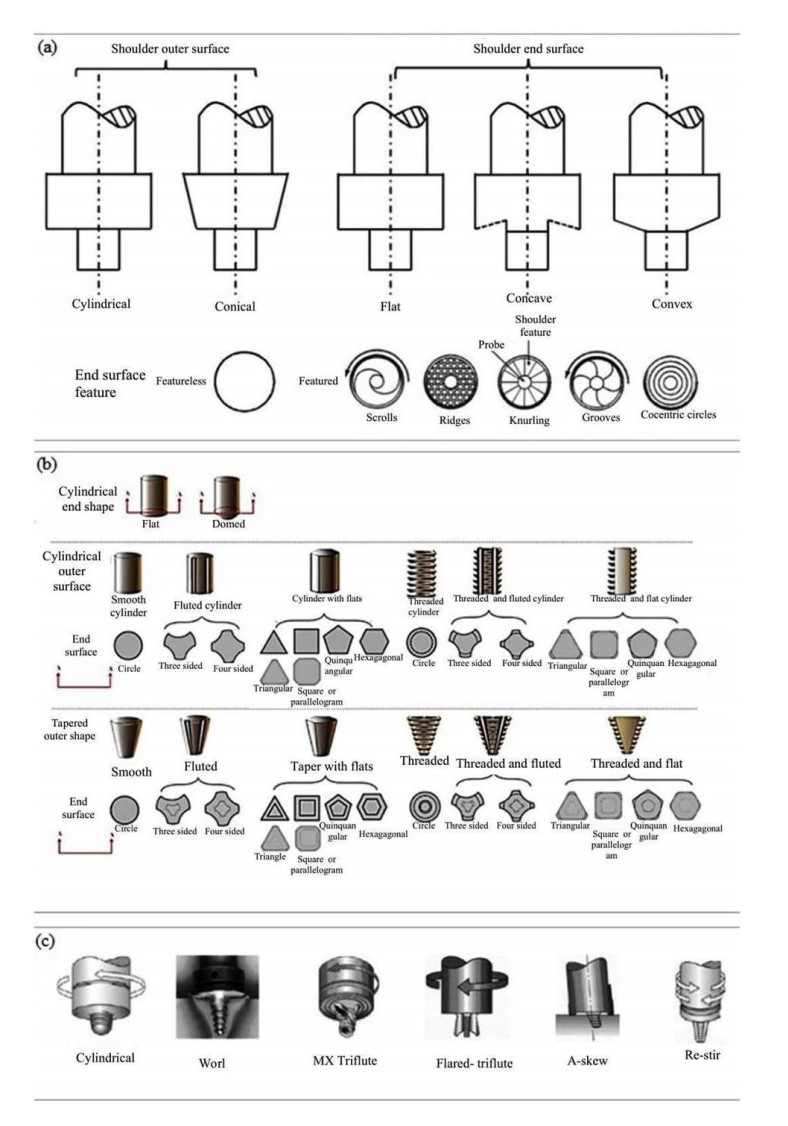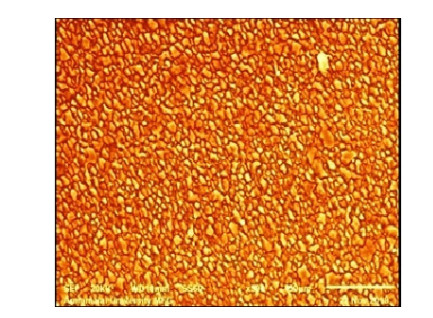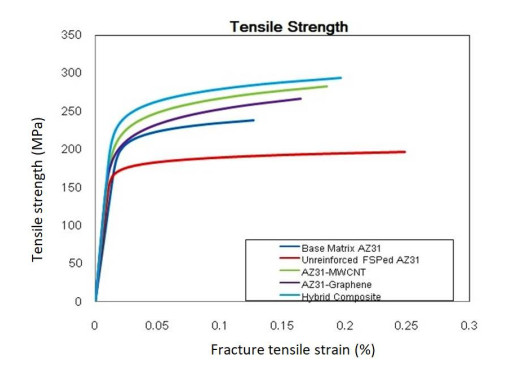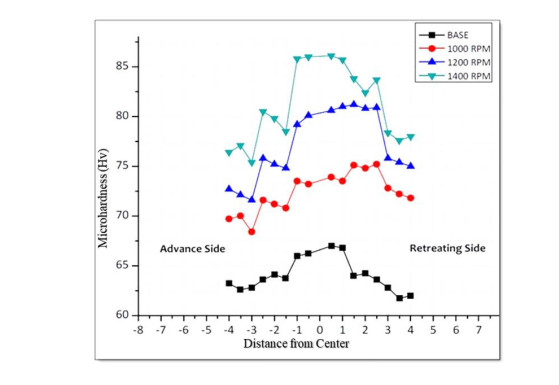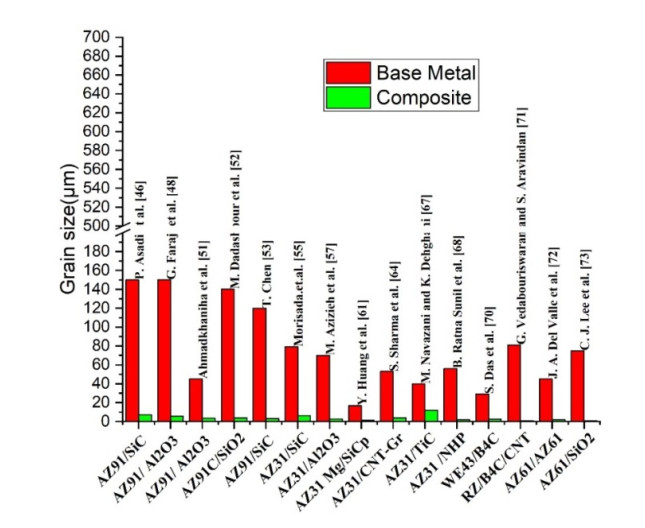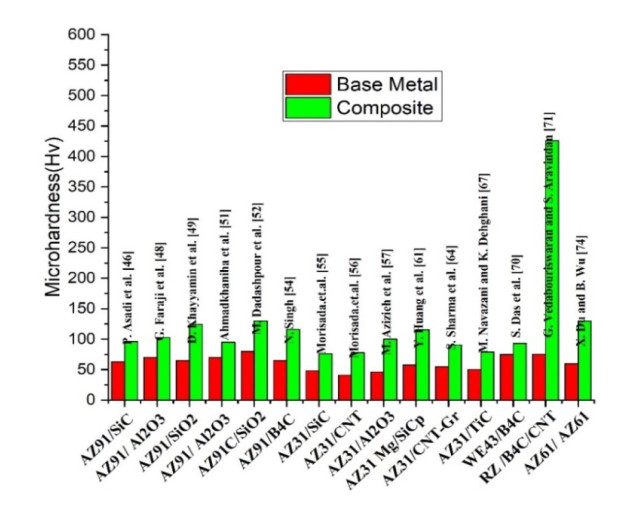1. Introduction
Cell-based in vitro assays [27] are efficient methods to study the effect of industrial chemicals on environment or human health. Our work is based on the cytotoxicity profiling project carried by Alberta Centre for Toxicology in which initially 63 chemicals were investigated using the xCELLigence Real-Time Cell Analysis High Troughput (RTCA HT) Assay [26]. We consider a mathematical model represented by stochastic differential equations to study cytotoxicity, i.e. the effect of toxicants on human cells, such as the killing of cells or cellular pathological changes.
The cells were seeded into wells of micro-electronic plates (E-Plates), and the test substances with 11 concentrations (1:3 serial dilution from the stock solution) were dissolved in the cell culture medium [20]. The microelectrode electronic impedance value was converted by a software to Cell Index (n), which closely reflects not only cell growth and cell death, but also cell morphology. The time-dependent concentration response curves (TCRCs) for each test substance in each cell line were generated [26] and based on these curves the toxicants in the present study were divided in 10 groups [30]. In Fig. 1 we display the TCRCs for the toxicant monastrol.
The success of clustering and classification methods depends on providing TCRCs that illustrates the cell population evolution from persistence to extinction. In [1] we consider a model represented by a system of ordinary differential equations to determine an appropriate range for the initial concentration of the toxicant. The model's parameters were estimated based on the data included in the TCRCs [1].
Let n(t) be the cell index, which closely reflects the cell population, Co(t) be the concentration of internal toxicants per cell, and Ce(t) be the concentration of toxicants outside the cells at time t. We suppose that the toxicants do not exist in the cells before experiments, so Co(0)=0, and that Ce(0) is equal to the concentration of toxicant used in the experiments. We assume that the death rate of cells is linearly dependent on the concentration Co of internal toxicants and we consider linear kinetic, so we get the following deterministic model [1]:
|
dn(t)dt=βn(t)−γn2(t)−αCo(t)n(t),
|
(1)
|
|
dCo(t)dt=λ21Ce(t)−η21Co(t),
|
(2)
|
|
dCe(t)dt=λ22Co(t)n(t)−η22Ce(t)n(t)
|
(3)
|
Here β>0 denotes the cell growth rate, γ=βK, where K>0 is the capacity volume, α>0 is the cell death rate, λ21 represents the uptake rate of the toxicant from environment, η21 is the toxicant input rate to the environment, λ22 is the toxicant uptake rate from cells, and η22 represents the losses rate of toxicants absorbed by cells.
The deterministic model (1)-(3) is a special case of the class of models proposed in [5], and it is related to the models considered in [7, 11, 15]. However, since we consider an acute dose of toxicant instead of a chronic one, the analysis of the survival/death of the cell population is different from the one done in the previously mentioned papers.
We have noticed that, for the toxicants considered here, the estimated values of the parameters η1, η2, λ1, and λ2 verify η21η22−λ21λ22>0 [1]. In this case we have 0<Ce(t)≤Ce(0), 0≤Co(t)≤λ21Ce(0)η21, and n(t)>0, for all t≥0. (see Lemma 3.1 in [1]). Moreover from Theorem 3.2 in [1] we know that limt→∞Ce(t) exists and its value determines the asymptotic behavior of the system:
1. If limt→∞Ce(t)<βη21αλ21 then the population is uniformly persistent:
|
limt→∞n(t)=K, limt→∞Co(t)=limt→∞Ce(t)=0.
|
2. If limt→∞Ce(t)>βη21αλ21 then |n|1=∫∞0n(t)dt<∞ and the population goes to local extinction:
|
limt→∞n(t)=0, limt→∞Co(t)=C∗eλ21η21, limt→∞Ce(t)=C∗e>βη21αλ21,
|
In practice we usually estimate a parameter by an average value plus an error term. To keep the stochastic model as simple as possible, we ignore the relationship between the parameters β and γ, and we replace them by the random variables
|
˜β=β+error1 ,˜γ=γ+error2
|
(4)
|
By the central limit theorem, the error terms may be approximated by a normal distribution with zero mean. Thus we replace equation (1) by a stochastic differential equation and, together with equations (2) and (3), we get the stochastic model
|
dn(t)=n(t)(β−γn(t)−αCo(t))dt+σ1n(t)dB1(t)−σ2n2(t)dB2(t),
|
(5)
|
|
dCo(t)=(λ21Ce(t)−η21Co(t))dt,
|
(6)
|
|
dCe(t)=(λ22Co(t)n(t)−η22Ce(t)n(t))dt,
|
(7)
|
Here σi≥0, i=1,2 are the noise intensities. (Ω,F,{Ft}t≥0,P) is a complete probability space with an increasing, right continuous filtration {Ft}t≥0 such that F0 contains all P-null sets, and Bi, i=1,2 are independent standard Brownian motions defined on the above probability space.
Several versions of a stochastic logistic equation similar with (5) were considered in [18], [19], [8], [9], [10] and [21]. The system of stochastic differential equations (5)-(7) is closely related with the stochastic models in a polluted environment considered in [15], [16], and [24]. However, for the models considered in these papers, instead of the equations (6) and (7), Co(t) and Ce(t) obey two linear equations without any terms involving n(t). Moreover, instead of a combination of linear and quadratic terms as in (5), in [15] only a linear stochastic term is considered, and in [16] two stochastic competitive models are considered including exclusively either linear stochastic terms or quadratic stochastic terms.
In this paper we extend the methods applied in [15] and [16] to find conditions for extinction, weakly persistence, and weakly stochastically permanence for the model (5)-(7). In addition to this we focus on the ergodic properties when the cell population is strongly persistent. The main contribution of this paper is the proof that n(t) converges weakly to the unique stationary distribution. If only one of the noise variances σ21, σ22 is non-zero, we also determine the density of the stationary distribution. For the study of the ergodic properties we apply techniques used for stochastic epidemic models in [4], [28], [29] and [23], and for a stochastic population model with partial pollution tolerance in a polluted environment in [25].
In the next section we prove that there is a unique non-negative solution of system (5)-(7) for any non-negative initial value. In section 3 we investigate the asymptotic behavior, and in section 4 we study the weak convergence of n(t) to the unique stationary distribution using Lyapunov functions. Numerical simulations that illustrate our results are presented in section 5. The last section of the paper contains a short summary and conclusions.
2. Existence and uniqueness of a positive solution
We have to show that system (5)-(7) has a unique global positive solution in order for the stochastic model to be appropriate. Let R+={x∈R:x≥0}, and R∗+={x∈R:x>0}.
Since equations (6) and (7) are linear in Co and Ce we have
|
Co(t)=Co(0)e−η21t+λ21e−η21t∫t0Ce(s)eη21sds
|
(8)
|
|
Ce(t)=Ce(0)exp(−η22∫t0n(s)ds)+λ22exp(−η22∫t0n(s)ds)∫t0Co(s)n(s)exp(η22∫s0n(l)dl)ds, t≥0.
|
(9)
|
Let's define the differential operator L associated with the system (5)-(7) by
|
L=∂∂t+(βn−γn2−αCon)∂∂n+(λ21Ce−η21Co)∂∂Co+(λ22Con−η22Cen)∂∂Ce+12((σ21n2+σ22n4)∂2∂2n)
|
For any function V∈C2,1(R3×(0,∞);R), by Itô's formula ([17]) we have
|
dV(x(t),t)=LV(x(t),t)dt+∂V(x(t),t)∂n(σ1n(t)dB1(t)−σ2n2(t)dB2(t)),
|
(10)
|
where x(t)=(n(t),Co(t),Ce(t))′, t≥0.
Theorem 2.1. Let D=R∗+×R+×R∗+. For any given initial value x(0)∈D the system (5)-(7) has a unique global positive solution almost sure (a.s.), i.e. P{x(t)∈D,t≥0}=1.
Proof. The proof is similar with the proof of theorem 3.1 in [29]. Since the coefficients are locally Lipschitz continuous functions, there exists a unique solution on [0,τe), where τe is the explosion time ([3]). To prove that the solution is in D and τe=∞ we define the stopping time
|
τm=inf{t∈[0,τe):min{n(t),Ce(t)}≤m−1 or max{n(t),Co(t),Ce(t)}≥m},
|
(11)
|
where m>m0 and m0>0 is a positive integer sufficiently large such that n(0)∈[1/m0,m0], 0≤Co(0)≤m0, and Ce(0)∈[1/m0,m0]. Here we set inf∅=∞. Obviously {τm} is increasing and let τ∞=limn→∞τm, where 0≤τ∞≤τe a.s.. From formula (8) it is easy to see that Co(t)≥0 for any t<τ∞.
We show that τ∞=∞ a.s., so τe=∞ a.s. and the solution is in D for any t≥0 a.s. Assume that there exists T>0, and ϵ>0 such that P(τ∞≤T)>ϵ. Thus there exists an integer m1≥m0 such that P(Θm)≥ϵ for any m≥m1, where Θm={τm≤T}.
We define the C3− function V:D→R∗+ as follows
|
V(x)=Co+α4λ22(Ce−logCe−1)+αCe4λ22+(√n−log√n−1)+n.
|
We get
|
LV(x)=(λ21Ce−η21Co)+α4λ22(1−1Ce)(λ22Con−η22Cen)+α4λ22(λ22Con−η22Cen)+(βn−γn2−αCon)(12√n−12n)+12(σ21n2+σ22n4)(−14n√n+12n2)+(βn−γn2−αCon)
|
Omitting some of the negative terms, for any x∈D we have
|
LV(x)≤λ21Ce+αCon4+αCon4+αCo2−αCon+f(n),≤λ21Ce+αCo2+f(n),
|
where
|
f(n)=−σ22n2√n8+α4λ21η22n+β√n2+γn2+σ214+σ22n24+βn
|
Since f is continuous on (0,∞) and limn→∞f(n)=−∞ it can easily be shown that LV(x)≤CV(x)+C, where the constant C>0 and x∈D.
Let's define ˜V(t,x)=e−Ct(1+V(x)). We have
|
L˜V(x,t)=−Ce−Ct(1+V(x))+e−CtLV(x)≤0.
|
Using Itô's formula (10) for ˜V and taking expectation we have for any m≥m1:
|
E[˜V(x(t∧τm),t∧τm)]=˜V(x(0),0)+E[∫t∧τm0L˜V(x(u∧τm),u∧τm)du]≤˜V(x(0),0).
|
Notice that for any ω∈Θm, m≥m1 we have V(x(τm,ω))≥bm=min{V(y)|y=(y1,y2,y3)′ has the components y1 or y3 equal with m−1 or m, or y2=m}. Hence
|
E[V(x(τm,ω))IΘm(ω)]≥P(Θm)bm≥ϵbm→∞
|
as m→∞. But E[V(x(τm,ω))IΘm(ω)]≤eCT˜V(x(0),0))<∞, for any m≥m1. Thus we have proved by contradiction that τ∞=∞.
Here we focus on the case when n(0)>0, we have only an acute dose of toxicant Ce(0)>0, Co(0)=0, and the external concentration of toxicant Ce(t) is never larger than Ce(0). For this we have to impose some conditions on the parameters. Similarly with the deterministic case we obtain the following results (for completion the proofs are included in Appendix A and Appendix B).
Lemma 2.2. If η21η22−λ21λ22>0, n(0)>0, Ce(0)>0, and Co(0)=0 then almost surely we have 0<Ce(t)≤Ce(0), 0≤Co(t)≤λ21Ce(0)η21 for all t≥0.
Theorem 2.3. If η21η22−λ21λ22>0, n(0)>0, Ce(0)>0, and Co(0)=0, then almost surely limt→∞Co(t) and limt→∞Ce(t) exist and
|
limt→∞Co(t)=λ21η21limt→∞Ce(t).
|
3. Survival analysis
In this section we assume that n(0)>0,Co(0)=0,Ce(0)>0. We have the following definitions ([16]).
Definition 3.1. The population n(t) is said to go to extinction a.s. if limt→∞n(t)=0 a.s..
Definition 3.2. The population n(t) is weakly persistent a.s. if lim supt→∞n(t)>0 a.s..
Definition 3.3. The population n(t) is said to be strongly persistent a.s. if lim inft→∞n(t)>0 a.s..
Definition 3.4. The population n(t) is said to be stochastically permanent if for any ϵ>0 there exist the positive constants c1(ϵ) and c2(ϵ) such that lim inft→∞P(n(t) ≤c1(ϵ))≥1−ϵ and lim inft→∞P(n(t)≥c2(ϵ))≥1−ϵ.
Theorem 3.5. a. If β−σ212−αlim inft→∞∫t0Co(s)dst<0 a.s. then the population n(t) goes exponentially to extinction a.s..
b. If β−σ212−αlim inft→∞∫t0Co(s)dst>0 a.s. then the population n(t) is weakly persistent a.s.
Proof. The proof is similar with the proof of Theorem 6 in [16]. We start with some preliminary results. By Itô's formula in (5) we have
|
dlnn(t)=(β−γn(t)−αCo(t)−σ21+σ22n2(t)2)dt+σ1dB1(t)−σ2n(t)dB2(t).
|
This means that we have
|
lnn(t)−lnn(0)=(β−σ212)t−γ∫t0n(s)ds−α∫t0Co(s)ds−σ222∫t0n2(s)ds+σ1B1(t)−σ2∫t0n(s)dB2(s),
|
(12)
|
Notice that the quadratic variation [17] of M(t)=−σ2∫t0n(s)dB2(s) is
|
⟨M(t),M(t)⟩=σ22∫t0n2(s)ds.
|
Now we do the proof for part a. Using the exponential martingale inequality (Theorem 7.4 [17]) and Borel-Cantelli lemma ([22], pp. 102), and proceeding as in the proof of Theorem 6 in [16] we can show that for almost all ω there exists a random integer n0=n0(ω) such that for all n≥n0 we have
|
sup0≤t≤n(M(t)−12⟨M(t),M(t)⟩)≤2lnn.
|
Hence, for all n≥n0 and all 0≤t≤n we have
|
−σ222∫t0n2(s)ds−σ2∫t0n(s)dB2(s)≤2lnn a.s..
|
Substituting the above inequality in (12) we get
|
lnn(t)−lnn(0)t≤β−σ212−α∫t0Co(s)dst+σ1B1(t)t+2lnnn−1 a.s.,
|
for all n≥n0, and any 0<n−1≤t≤n. Since limt→∞B(t)t=0 a.s. (see Theorem 3.4 in [17]) we get
|
lim supt→∞lnn(t)t≤β−σ212−αlim inft→∞∫t0Co(s)dst<0 a.s..
|
Next we prove part b. Suppose that P(Ω)>0 where Ω={limsupt→∞n(t)≤0}. From Theorem 2.1 we know that n(t)>0, t≥0 a.s., so P(Ω1)>0 where Ω1={limt→∞n(t)=0}, and Ω1⊆Ω. Thus, for any ω∈Ω1 we have
|
lim supt→∞lnn(t,ω)t≤0
|
(13)
|
Moreover, from the law of large numbers for local martingales (Theorem 3.4 in [17]) there exists a set Ω2⊆Ω1 with P(Ω2)>0 such that for any ω∈Ω2 we have
|
limt→∞M(t,ω)t=limt→∞B1(t,ω)t=0.
|
From (12) we get:
|
ln(n(t))t=ln(n(0))t+(β−σ212)−α∫t0Co(s)dst−∫t0(γn(s)+σ222n2(s))dst+σ1B1(t)t+M(t,ω)t
|
Hence, for any ω∈Ω2 we have
|
lim supt→∞lnn(t,ω)t=(β−σ212)−αlim inft→∞∫t0Co(s,ω)dst
|
Since we know that β−σ212−αlim inft→∞∫t0Co(s,ω)dst>0 a.s., we have a contradiction with (13), so lim supt→∞n(t)>0 a.s.
We have the following result regarding the expectation of n(t).
Lemma 3.6. There exists a constant K1>0 such that supt≥0E[n(t)]≤K1.
Proof. Using Itô's formula in (5) we get:
|
d(etn(t))=n(t)et(1+β−αCo(t)−γn(t))dt+σ1n(t)etdB1(t)−σ2n2(t)etdB2(t)≤n(t)et(1+β−γn(t))dt+σ1n(t)etdB1(t)−σ2n2(t)etdB2(t)≤et(1+β)24γdt+σ1n(t)etdB1(t)−σ2n2(t)etdB2(t)
|
(14)
|
Let
|
ηm=inf{t≥0:n(t)∉(1/m,m)},
|
(15)
|
for any m>m0, where m0>0 was defined in the proof of Theorem 2.1. Obviously ηm≥τm, m>m0, where τm is given in (11). In Theorem 2.1 we have proved that limm→∞τm=∞ a.s., so we also have limm→∞ηm=∞ a.s.. Taking expectation in (14) we get:
|
E[et∧τmn(t∧τm)]≤n(0)+E[∫t∧τm0es(1+β)24γds]≤n(0)+(1+β)24γ(et−1).
|
Letting m→∞ we get
|
E[n(t)]≤n(0)et+(1+β)24γ(1−e−t).
|
Thus, there exists a constant K1>0 such that supt≥0E[n(t)]≤K1.
Corollary 1. For any ϵ>0 there exists c1(ϵ) such that liminft→∞P(n(t)≤c1(ϵ))≥1−ϵ.
Proof. For any ϵ>0, set c1(ϵ)=K1/ϵ, where the constant K1>0 is given in the previous lemma. From the Markov's inequality [22] we obtain
|
P(n(t)>c1(ϵ))≤E[n(t)]c1(ϵ).
|
Hence, from Lemma 3.6 we get
|
lim supt→∞P(n(t)>c1(ϵ))≤lim supt→∞E[n(t)]c1(ϵ)≤ϵ.
|
Theorem 3.7. If η21η22−λ21λ22>0 and β−σ21−αλ21Ce(0)η21>0, then the cell population is stochastically permanent.
Proof. First we show that limsupt→∞E[1/n(t)]≤M2, where M2 is a positive constant.
By Itô's formula in (5) we get for any real constant c:
|
d(ectn(t))=ect(1n(t)(c−β+σ21+αCo(t))+γ+σ22n(t))dt−σ1ectn(t)dB1(t)+σ2ectdB2(t)
|
Since η21η22−λ21λ22>0, from Lemma 2.2 we know that 0≤Co(t)≤λ21Ce(0)η21 for all t≥0 a.s.. We choose any 0<c<β−σ21−αλ21Ce(0)η21, and we get:
|
d(ectn(t))≤ect(γ+σ22n(t))dt−σ1ectn(t)dB1(t)+σ2ectdB2(t)
|
(16)
|
Taking expectation in (16) and using Lemma 3.6 we get:
|
E[ec(t∧ηm)n(t∧ηm)]≤1n(0)+E[∫t∧ηm0ecs(γ+σ22n(s))ds]≤1n(0)+(γ+σ22K1)(ect−1)c,
|
where ηm was defined in (15). Letting m→∞ we get
|
E[1n(t)]≤1n(0)ect+(γ+σ22K1)c(1−e−ct),
|
so lim supt→∞E[1/n(t)]≤M2, where 0<M2=(γ+σ22K1)/c.
Next we show that for any ϵ>0 there exists c2(ϵ) such that lim inft→∞P(n(t)≥c2(ϵ))≥1−ϵ.
For any ϵ>0 set c2(ϵ)=ϵ/M2. From Markov's inequality we have
|
P(n(t)<c2(ϵ))=P(1n(t)>1c2(ϵ))≤c2(ϵ)E[1n(t)]
|
Hence
|
lim supt→∞P(n(t)<c2(ϵ))≤ϵlim supn→∞E[1/n(t)]/M2≤ϵ.
|
Thus lim inft→∞P(n(t)≥c2(ϵ))≥1−ϵ, and this inequality and Corollary 1 implies that n(t) is stochastically permanent.
4. Stationary distributions
The deterministic system (1)-(3) has a maximum capacity equilibrium point (K,0,0)′, where K is the capacity volume ([1]). For the stochastic system (5)-(7), (K,0,0)′ is not a fixed point, and, when the cell population is persistent, we no longer have limt→∞n(t)=K. In this section we study the asymptotic behavior of n(t) when limt→∞Co(t)=0 a.s..
For stochastic differential equations, invariant and stationary distributions play the same role as fixed points for deterministic differential equations. In general, let X(t) be the temporally homogeneous Markov process in E⊆Rl representing the solution of the stochastic differential equation
|
dX(t)=b(X(t))dt+d∑r=1σr(X(t))dBr(t),
|
(17)
|
where Br(t), r=1,…,d are standard Brownian motions. We define the operator L associated with equation (17):
|
L=l∑i=1bi(x)∂∂xi+12l∑i,j=1Ai,j(x)∂2∂xi∂xj, Ai,j(x)=d∑r=1σr,i(x)σr,j(x).
|
Let P(t,x,⋅) denote the probability measure induced by X(t) with initial value X(0)=x∈E: P(t,x,A)=P(X(t)∈A|X(0)=x), A∈B(E), where B(E) is the σ−algebra of all the Borel sets A⊆E.
Definition 4.1. A stationary distribution [6] for X(t) is a probability measure μ for which we have
|
∫EP(t,x,A)μ(dx)=μ(A), for any t≥0, and any A∈B(E).
|
Definition 4.2. The Markov process X(t) is stable in distribution if the transition distribution P(t,x,⋅) converges weakly to some probability measure μ(⋅) for any x∈E.
It is clear that the stability in distribution implies the existence of a unique stationary measure, but the converse is not always true [2]. We have the following result (see lemma 2.2 in [29] and the references therein).
Lemma 4.3. Suppose that there exists a bounded domain U⊆E with regular boundary, and a non-negative C2−function V such that A(x)=(Ai,j(x))1≤i,j≤l is uniformly elliptical in U and for any x∈E∖U we have LV(x)≤−C, for some C>0. Then the Markov process X(t) has a unique stationary distribution μ(⋅) with density in E such that for any Borel set B⊆E
|
limt→∞P(t,x,B)=μ(B)Px{limT→∞1T∫T0f(X(t))dt=∫Ef(x)μ(dx)}=1,
|
for all x∈E and f being a function integrable with respect to the probability measure μ.
We now study the stochastic system (5)-(7) when limt→∞Co(t)=0 a.s.. We introduce two new stochastic process X(t) and Xϵ(t) which are defined by the initial conditions X(0)=Xϵ(0)=n(0)∈R∗+ and the stochastic differential equations
|
dX(t)=(βX(t)−γX2(t))dt+σ1X(t)dB1(t)−σ2X2(t)dB2(t),
|
(18)
|
|
dXϵ(t)=(βXϵ(t)−γX2ϵ(t)−αϵXϵ(t))dt+σ1Xϵ(t)dB1(t)−σ2X2ϵ(t)dB2(t),
|
(19)
|
Lemma 4.4. a. For any given initial value X(0)>0, the equation (18) has a unique global solution X(t) such that P{X(t)>0,t≥0}=1.
b. For any ϵ>0 and any given initial value Xϵ(0)>0, the equation (19) has a unique global solution Xϵ(t) such that P{Xϵ(t)>0,t≥0}=1.
c. There exists a constant C1>0 such that supt≥0E[X(t)]≤C1 and, for any ϵ>0, supt≥0E[Xϵ(t)]≤C1.
Proof. The proofs for a. and b. can be done similarly with the proof of Theorem 2.1, using the C2-function V:R∗+→R+, V(x)=√x−log√x−1. The proof of c. is analogous with the proof of Lemma 3.6.
Let PX(t,x,⋅) denote the probability measure induced by X(t) with initial value X(0)=x∈R∗+, t≥0. In the following theorem, using Lemma 4.3, we show that the Markov process X(t) is stable in distribution.
Theorem 4.5. If σ21<2β then the Markov process X(t) has a unique stationary distribution μ1(⋅) with density in R∗+ such that for any Borel set B⊆R∗+
|
limt→∞PX(t,x,B)=μ1(B)Px{limT→∞1T∫T0f(X(t))dt=∫Ef(x)μ1(dx)}=1,
|
for all x∈R∗+ and f being a function integrable with respect to the probability measure μ1.
Proof. We consider the C2-function V:R∗+→R+, V(x)=√x−log√x−1. Simple calculations show that
|
LV(x)=−σ228x5/2+σ224x2−γ2x3/2+γ2x+(β2−σ218)x1/2+(σ214−β2).
|
Since LV(⋅) is a continuous function on R∗+ and LV(0)=σ214−β2<0, there exists a constant A1>0 such that LV(x)<−C1 for any x∈(0,A1], for some C1>0. We also have limx→∞LV(x)=−∞. Thus, there exists a constant A2>A1>0 such that LV(x)<−C2 for any x∈[A2,∞), for some C2>0.
Let U=(A1,A2)⊂R∗+. Then U is a bounded domain, and LV(x)<−C for any x∈R∗+∖U, where C>0 is the minimum between C1 and C2. Notice that A(x)=σ21x2+σ22x4 is uniformly elliptical on U, so the assumptions of Lemma 4.3 are met. Therefore, the Markov process X(t) has a unique stationary distribution μ1(⋅) and it is ergodic.
Let define the processes N(t)=1/n(t) a.s., Y(t)=1/X(t) a.s., Yϵ(t)=1/Xϵ(t) a.s., t≥0, with N(0)=Y(0)=Yϵ(0)=1/n(0)>0. Then from Lemma 4.4 and Theorem 2.1 we have P{N(t)>0,Y(t)>0,Yϵ(t)>0,t≥0}=1. Applying Itô's formula in equations (5), (18) and (19) we get
|
dN(t)=(N(t)(σ21−β)+αN(t)Co(t)+γ+σ22N(t))dt−σ1N(t)dB1(t)+σ2dB2(t) a.s.,
|
(20)
|
|
dY(t)=(Y(t)(σ21−β)+γ+σ22Y(t))dt−σ1Y(t)dB1(t)+σ2dB2(t) a.s.,
|
(21)
|
|
dYϵ(t)=(Yϵ(t)(σ21−β+αϵ)+γ+σ22Yϵ(t))dt−σ1Yϵ(t)dB1(t)+σ2dB2(t) a.s..
|
(22)
|
From the proof of Theorem 3.7 we know that if η21η22−λ21λ22>0 and β−σ21−αλ21Ce(0)η21>0 then there exist a constant K2>0 such that supt≥0E[N(t)]≤K2. We have similar results for the processes Y(t) and Yϵ(t).
Lemma 4.6. If σ21<β then supt≥0E[Y(t)]<∞ and supt≥0E[Yϵ(t)]<∞, for any 0<ϵ<β−σ21α.
Proof. The proof is based on the results in Lemma 4.4 and it is similar with the first part of the proof of Theorem 3.7. For completeness we have included it in Appendix C.
We use the processes N(t), Y(t), Yϵ(t) to prove the main result of this section.
Theorem 4.7. Let (n(t),Co(t),Ce(t)) be the solution of the system (5)-(7) with any initial value (n(0),Co(0),Ce(0))′∈D=R∗+×R+×R∗+. If limt→∞Co(t)=0 a.s. and β−σ21>0 then n(t)w→t→∞μ1, where w→ means convergence in distribution (weak convergence [22]) and μ1 is the probability measure on R∗+ given in Theorem 4.5.
Proof. We follow the same idea as in the proof of Theorem 2.4 in [28]. From theorem 4.5 we know that X(t)w→t→∞μ1, where μ1 is a probability measure on R∗+. By the Continuous Mapping Theorem [22], Y(t)=1/X(t) also converges weakly to a probability measure ν1 on R∗+, the reciprocal of μ1. We will show that N(t)=1/n(t)w→t→∞ν1.
Firstly, let's notice that
|
Y(t)≤N(t) and Y(t)≤Yϵ(t) for any t≥0 a.s..
|
(23)
|
Indeed, if we denote ξ(t)=N(t)−Y(t), then ξ(0)=0 and from equations (20) and (21) we get
|
dξ(t)=(ξ(t)(σ21−β−σ22N(t)Y(t))+αN(t)Co(t))dt−σ1ξ(t)dB1(t) a.s..
|
The solution of the previous linear equation is given by (see chapter 3, [17])
|
ξ(t)=Φ(t)∫t0αN(s)Co(s)Φ(s)ds a.s.,
|
where
|
Φ(t)=exp{−t(β−σ212)−∫t0σ22N(s)Y(s)ds−σ1B1(t)}>0
|
Obviously ξ(t)≥0, t≥0, a.s., and this means that we have Y(t)≤N(t) for any t≥0 a.s. Similarly, using equations (21) and (22), we can show that Y(t)≤Yϵ(t) for any t≥0 a.s..
Secondly we show that for any 0<ϵ<2β−σ212α
|
liminft→∞(Yϵ(t)−N(t))≥0 a.s..
|
(24)
|
From equations (20) and (22) we get
|
d(Yϵ(t)−N(t))=((Yϵ(t)−N(t))(σ21+αϵ−β−σ22N(t)Yϵ(t))+αN(t)(ϵ−Co(t)))dt−σ1(Yϵ(t)−N(t))dB1(t) a.s..
|
The solution of the linear equation is given by
|
Yϵ(t)−N(t)=Φ1(t)∫t0αN(s)(ϵ−Co(s))Φ1(s)ds a.s.,
|
where
|
0<Φ1(t)=exp{−t(β−αϵ−σ212)−∫t0σ22N(s)Yϵ(s)ds−σ1B1(t)}≤exp{−t(β−αϵ−σ212+σ1B1(t)t)}
|
Since limt→∞B1(t)/t=0 a.s., for any 0<ϵ<2β−σ212α we get limt→∞Φ1(t)=0 a.s.. Moreover, because limt→∞Co(t)=0 a.s., for almost any ω there exist 0<T=T(ω) such that ϵ−Co(t,ω)>0 for any t>T(ω). Thus for almost any ω and any t>T,
|
Yϵ(t)−N(t)=Φ1(t)(∫T0αN(s)(ϵ−Co(s))Φ1(s)ds+∫tTαN(s)(ϵ−Co(s))Φ1(s)ds)≥Φ1(t)∫T0αN(s)(ϵ−Co(s))Φ1(s)ds
|
Therefore for any 0<ϵ<2β−σ212α we have
|
lim inft→∞(Yϵ(t)−N(t))≥limt→∞Φ1(t)∫T0αN(s)(ϵ−Co(s))Φ1(s)ds=0 a.s..
|
Thirdly we prove that
|
limϵ→0limt→∞E[Yϵ(t)−Y(t)]=0.
|
(25)
|
We know from (23) that Yϵ(t)−Y(t)≥0, t≥0 a.s. Using equations (21) and (22) we get
|
d(Yϵ(t)−Y(t))=((Yϵ(t)−Y(t))(σ21+αϵ−β−σ22Y(t)Yϵ(t))+αϵY(t))dt−σ1(Yϵ(t)−Y(t))dB1(t)≤((Yϵ(t)−Y(t))(σ21+αϵ−β)+αϵY(t))dt−σ1(Yϵ(t)−Y(t))dB1(t) a.s..
|
From Lemma 4.6 we know that supt≥0E[Y(t)]<∞, so taking expectations in the previous inequality we have
|
E[Yϵ(t)−Y(t)]≤∫t0E[Yϵ(s)−Y(s)](σ21+αϵ−β)+αϵE[Y(s)]ds≤∫t0E[Yϵ(s)−Y(s)](σ21+αϵ−β)ds+tαϵsupt≥0E[Y(t)] a.s..
|
For any 0<ϵ<(β−σ21)/α, by the comparison theorem (see theorem 1.4.1 in [14]) we get
|
0≤E[Yϵ(t)−Y(t)]≤αϵsupt≥0E[Y(t)]β−σ21−αϵ(1−exp(−t(β−σ21−αϵ)))
|
Taking limits in the previous inequality we get equation (25).
Finally, using (23), (24), and (25) we obtain that limt→∞(N(t)−Y(t))=0, in probability. But it has been shown that Y(t)w→t→∞ν1, where ν1 is a probability measure on R∗+. Thus, from Slutsky's theorem [22], N(t)w→t→∞ν1, and, by the Continuous Mapping Theorem, n(t)=1/N(t)w→t→∞μ1.
Corollary 2. Let (n(t),Co(t),Ce(t)) be the solution of the system (5)-(7) with any initial value (n(0),Co(0),Ce(0))′∈D, and such that limt→∞Co(t)=0 a.s..
a. If σ1=0 then n(t)w→t→∞μ1 where μ1 is the probability measure on R∗+ with density
|
p(x)=1G1x4exp(−βσ22(1x−γβ)2),x>0
|
(26)
|
|
G1=σ22β5/2(Ψ(γ√2ββσ2)√π(σ22β+2γ2)+γσ2β1/2exp(−γ2σ22β))
|
(27)
|
where Ψ(x)=P(Z≤x) is the distribution function for the standard normal distribution Z∼N(0,1).
b. If σ21<β and σ2=0 then n(t)w→t→∞μ1 where μ1 is a gamma distribution with shape parameter 2(β−σ21)σ21+1 and scale parameter σ212γ.
Proof. We know that Y(t)w→t→∞ν1, where ν1 is a probability measure on R∗+. When σ1=0 or σ2=0 we can prove the ergodicity of Y(t) directly using Theorem 1.16 in [13].
a. If σ1=0 the equation (21) become
|
dY(t)=(−Y(t)β+γ+σ22Y(t))dt+σ2dB2(t) a.s.,
|
(28)
|
Let define
|
q(y)=exp(−2σ22∫y1(−βu+σ22u+γ)du)=1y2exp(−βσ22(1−γβ)2)exp(βσ22(y−γβ)2)
|
It can be easily shown that
|
∫10q(y)dy=∞, ∫∞1q(y)dy=∞, ∫∞01σ22q(y)dy=G1σ22exp(βσ22(1−γβ)2),
|
where G1 is given in (27). So, by Theorem 1.16 in [13], Y(t) is ergodic and with respect to the Lebesgue measure its stationary measure ν1 has density
|
p1(x)=1σ22q(x)∫∞01σ22q(y)dy=x2exp(−βσ22(x−γβ)2)G1
|
Thus, by Theorem 4.5, X(t)=1/Y(t) is ergodic and its stationary measure μ1 is the reciprocal of the measure ν1, so with respect to the Lebesgue measure has density p(x)=p1(1/x)/x2 given in equation (26). Notice that we also have
|
limt→∞1t∫t0X(u)du=∫∞0xp(x)dx=σ22β3/2G1(σ2√βexp(−γ2σ22β)+2γ√πΨ(γ√2ββσ2)) a.s..
|
b. If σ2=0, then the equation (21) becomes
|
dY(t)=(γ−Y(t)(β−σ21))dt−σ1Y(t)dB1(t) a.s..
|
Proceeding similarly as for a. we can show that ν1 is the reciprocal gamma distribution with shape parameter 2(β−σ21)σ21+1 and scale parameter σ212γ (see also the proof of Theorem 4.5 in [29]). Thus, by Theorem 4.5, X(t)=1/Y(t) is ergodic and its stationary measure μ1 is the gamma distribution with shape parameter 2(β−σ21)σ21+1 and scale parameter σ212γ. Since the mean for this gamma distribution is (2(β−σ21)σ21+1)σ212γ, we also have
|
limt→∞1t∫t0X(u)du=(2(β−σ21)σ21+1)σ212γ a.s..
|
Notice that if σ21>2β−2αliminft→∞∫t0Co(s)dst a.s. then, according to Theorem 3.5, limt→∞n(t)=0, so n(t)w→t→∞δ0, where δ0 is the Dirac distribution centered in 0.
On the other hand, if σ21<β, η21η22−λ21λ22>0, and liminft→∞n(t)>0 a.s., then according to Theorem 4.7 n(t)w→t→∞μ1. Indeed, since liminft→∞n(t)>0 a.s., then ∫∞0n(t)dt=∞ a.s., and from the proof of Theorem 2.3 we know that limt→∞Co(t)=limt→∞Ce(t)=0, so the assumptions of Theorem 4.7 are satisfied.
5. Numerical simulations
First we illustrate numerically the results obtained in section 3 regarding survival analysis.We consider a cell population exposed to the toxicant monastrol as in the experiments described in [1]. The parameters' values for this toxicant are estimated in [1]: β=0.074, K=18.17, η1=0.209, λ1=0.177, λ2=0.204, η2=0.5, and α=0.016. Notice that for this toxicant we have η21η22−λ21λ22>0. We solve numerically the system (5)-(7) using an order 2 strong Taylor numerical scheme [12].
One of the applications of the mathematical model is for finding the threshold value for Ce(0) at which the population becomes extinct. This value depends on the initial value n(0) and for the deterministic model (1)-(3) can be found numerically (see also Fig. 3 in [1]). From Theorem 3.5 we can see that large values of the noise variance σ21 result in population extinction, so we expect that the presence of noise will lower the values of the threshold.
We illustrate this for the model with initial values n(0)=2.5 and Co(0)=0. In the deterministic case the threshold value where the population goes extinct can be found numerically, and it is approximately Cdete(0)=382.2. We can see in Fig. 2 (a) that for the stochastic model with σ1=0.01, σ2=0 and initial value Ce(0)=380 the population goes to extinction, while in the deterministic case (σ1=σ2=0) the population is persistent for these initial values. According to Fig. 2 (a), in the stochastic case the threshold value for this simulation is Cstoche(0)∈(375,380). Similar results are obtained for the stochastic model with σ1=0, σ2=0.001 and are presented in Fig. 3 (a). For this simulation the threshold value in the stochastic case is Cstoche(0)∈(379,380).
Notice also that the results displayed in Figs. 2 and 3 agree with the conclusion of Theorem 2.3. For the stochastic model with Ce(0)=380, for the simulations presented in Figs. 2 and 3 we have limt→∞n(t,ω)=0 (the trajectories plotted with red plain lines). For σ1=0.01 and σ2=0 we can see that limt→∞Co(t,ω)=5.3819 and limt→∞Ce(t,ω)=7.494 (the trajectories plotted with red plain lines in Fig. 2 (b), (c)). For σ1=0 and σ2=0.002 from Fig. 3 (b), (c) we can notice that limt→∞Co(t,ω)=5.255 and limt→∞Ce(t,ω)=7.3173. For both simulation we have limt→∞Co(t)=λ21η21limt→∞Ce(t), as given in Theorem 2.3. Moreover, for the stochastic model with Ce(0)=375, σ1=0.01 and σ2=0 (the green dot -dashed lines in Fig. 2) and the model with Ce(0)=379, σ1=0 and σ2=0.002 (the green dot -dashed lines in Fig. 3), we have
|
lim inft→∞n(t,ω)>0,limt→∞Co(t,ω)=limt→∞Ce(t,ω)=0
|
Next we use the same parameters values as stated at the beginning of this section and the initial values n(0)=2.5, Co(0)=0, Ce(0)=1.8 to illustrate the stability in distribution of the process n(t). For both σ1=σ2=0.001 and σ1=σ2=0.005 the assumptions of Theorem 4.7 are met. In Figs. 4 (a) and (c) we show the histograms of the result of running 10 000 simulations of the path n(t) for a long run of 5 000 0000 iterations, but storing only the last of these n(t) values. For comparison Figs. 4 (b) and (d) show the histograms of the last 4 000 000 samples from a single run of 5 000 000 iterations. For both sets of values for σ1 and σ2 the corresponding histograms are similar. Because of this similarity and of the huge number of iterations considered, we may assume that the probability distribution of n(t) has more or less reached the distribution μ1 given in Theorem 4.7.
When σ2=0 or σ1=0, the density of the probability distribution μ1 is given in Corollary 2 (a) and (b), respectively. To illustrate these results we use the same parameter values as stated at the beginning of this section and the initial values n(0)=2.5, Co(0)=0, Ce(0)=180. For σ1=0 and several values of σ2 we display the histograms for the last 4 000 000 samples of a single run of 5 000 000 iterations (shaded areas in Fig. 5) and the graph of the corresponding density given in Corollary 2 (a). In Fig. 6 we do similar plots for σ2=0, several values of σ1, and the density of the corresponding Gamma distribution in Corollary 2 (b). We can notice that the histograms give very accurate approximations for the densities in Corollary 2. Also, in both Fig. 5 and Fig. 6, when the values of σ1 or σ2 increase, the histograms become right skewed. Moreover, for large values of σ1 or σ2 the population becomes extinct and μ1=δ0 (see also Theorem 3.5).
6. Conclusions
We present a stochastic model to study the effect of toxicants on human cells. To account for parameter uncertainties, the model is expressed as a system of coupled ordinary stochastic differential equations. The variables are the cell index n(t), which closely reflects the cell population, the concentration Co(t) of internal toxicants per cell, and the concentration Ce(t) of toxicants outside the cells at time t. There are a few papers that consider similar stochastic models for population dynamics, but they mainly study conditions for extinction and persistence. Here we focus on the ergodic properties when the population is persistent.
We first prove the positivity of the solutions. Then we investigate the influence of noise on the cell population survival. When the noise variances σ21 or σ22 are sufficiently large, the population goes to extinction. Numerical simulations show that, for the stochastic model, the population goes to extinction at threshold values Cstoche(0) below the deterministic threshold value Cdete(0). Furthermore, increasing the noise variances σ21 or σ22 results in a lower value Cstoche(0) at which the population becomes extinct.
Moreover, we prove that when the noise variance σ21 is sufficiently small and the population is strongly persistent, then the cell index converges weakly to the unique stationary probability distribution. Increasing the noise intensity causes a right skewness of the stationary distribution.
Here we illustrate our results for the toxicant monastrol. We have also considered other toxicants from the experiments described in [1] classified in various clusters [30]. We have noticed that the cluster type does not change the type of stationary distribution, nor has an effect on the behavior of the distributions in response to increased noise variances.
Appendix A. Proof of Lemma 2.2
Proof. The proof is similar with the proof of Lemma 3.1 in [1]. We define the stopping time τ=inf{t≥0:Ce(t)>Ce(0)}. We show that τ=∞ a.s.. Assume that there exists T>0, and ϵ>0 such that P(τ≤T)>ϵ and let Ω be the set where the solution (n(t),Co(t),Ce(t))′ of the system (5)-(7) is continuous. Hence P(Ω)=1 ([3]), and P(Ω1)>0, where Ω1=Ω∩{τ≤T}.
From (8) with Co(0)=0 we get for any ω∈Ω1 and any 0<t<τ(ω)
|
0≤Co(t,ω)=λ21e−η22t∫t0Ce(s,ω)eη21sds≤λ21e−η22tCe(0)∫t0eη21sds=λ21Ce(0)η21(1−e−η21t)≤λ21Ce(0)η21
|
Moreover, on Ω1 we have Ce(τ)=Ce(0), and then from equation (7) we obtain
|
dCedt|t=τ=λ22Co(τ)n(τ)−η22Ce(τ)n(τ)≤Ce(0)n(τ)(λ21λ22η21−η22)<0
|
Thus we have a contradiction with the definition of τ.
Appendix B. Proof of Theorem 2.3
Proof. The proof is similar with the proof of Theorem 3.2 in [1]. Let Ω be the set where the solution (n(t),Co(t),Ce(t))′ of the system (5)-(7) is continuous and n(t)>0, 0<Ce(t)≤Ce(0), 0≤Co(t)≤λ21Ce(0)/η21 for any t≥0. From Theorem 2.1 and Lemma 2.2 we know that P(Ω)=1. Let Ω1={ω∈Ω:|n|1(ω)<∞} and Ω2={ω∈Ω:|n|1(ω)=∞}, where |n|1(ω)=∫∞0n(t,ω)dt.
If P(Ω1)>0, then for any ω∈Ω1 and any t≥0, we have
|
∫t0Co(s,ω)n(s,ω)exp(η22∫s0n(l,ω)dl)ds≤λ21Ce(0)η21exp(η22|n|1(ω))|n|1(ω).
|
Thus 0≤M(ω):=∫∞0Co(s,ω)n(s,ω)exp(η22∫s0n(l,ω)dl)ds<∞, and from (9) we get
|
limt→∞Ce(t,ω)=Ce(0)exp(−η22|n|1(ω))+λ22M(ω)exp(−η22|n|1(ω))<∞.
|
Consequently, there exists T1(ω)>0 such that for any t>T1(ω) we have Ce(t,ω)>Ce(0)exp(−η22|n|1(ω))/2. This implies that ∫∞0Ce(s,ω)eη21sds=∞ because for any t>T1(ω) we have
|
∫t0Ce(s,ω)eη21sds≥∫tT1(ω)Ce(s,ω)eη21sds≥Ce(0)exp(−η22|n|1(ω))/2∫tT1(ω)eη21sds.
|
So we can apply L'Hospital's rule in (8), and we get
|
limt→∞Co(t,ω)=λ21η21limt→∞Ce(t,ω)>0.
|
Thus, on Ω1, limt→∞Ce(t) and limt→∞Co(t) exist and they are related by the previous equation.
Next, if P(Ω2)>0 we consider any ω∈Ω2. If 0≤∫∞0Co(s,ω)n(s,ω) exp(η22 ∫s0n(l,ω)dl)ds<∞, from (9) we get limt→∞Ce(t,ω)=0. On the other hand, if ∫∞0Co(s,ω)n(s,ω)exp(η22∫s0n(l,ω)dl)ds=∞, from L'Hospital's rule in (9) we have
|
0≤λ22η22lim inft→∞Co(t,ω)≤lim inft→∞Ce(t,ω)≤lim supt→∞Ce(t,ω)≤λ22η22lim supt→∞Co(t,ω)
|
Similarly, from (8) we either get that limt→∞Co(t,ω)=0 (if ∫∞0Ce(s,ω)eη21sds<∞), or we have
|
0≤λ21η21lim inft→∞Ce(t,ω)≤lim inft→∞Co(t,ω)≤lim supt→∞Co(t,ω)≤λ21η21lim supt→∞Ce(t,ω),
|
(if ∫∞0Ce(s,ω)eη21sds=∞). All these possible cases give
|
limt→∞Co(t,ω)=limt→∞Ce(t,ω)=0,
|
because η21η22−λ21λ22>0. Thus, on Ω2, limt→∞Ce(t) and limt→∞Co(t) exist and they are equal with zero.
In conclusion, on Ω=Ω1∪Ω2 we have shown that limt→∞Ce(t) and limt→∞Co(t) exist, and we have limt→∞Co(t)=λ21η21limt→∞Ce(t).
Appendix C. Proof of Lemma 4.6
Proof. We choose any 0<c<β−σ21. Using Itô's formula in (21) we get:
|
d(ectY(t))=ect(Y(t)(c+σ21−β)+γ+σ22X(t))dt−σ1ectY(t)dB1(t)+σ2ectdB2(t)≤ect(γ+σ22X(t))dt−σ1ectY(t)dB1(t)+σ2ectdB2(t)
|
(29)
|
Let τm=inf{t≥0:Y(t)∉(1/m,m)}, for any m>m0, where m0>0 is sufficiently large such that n(0)∈(1/m0,m0). Obviously limm→∞τm=∞ a.s.. Taking expectation in (29) and using Lemma 4.4 we get:
|
E[ec(t∧τm)Y(t∧τm)]≤1n(0)+E[∫t∧τm0ecs(γ+σ22X(s))ds]≤1n(0)+(γ+σ22C1)(ect−1)c.
|
Letting m→∞ we get
|
E[Y(t)]≤1n(0)ect+(γ+σ22C1)c(1−e−ct).
|
Thus, there exists a constant C2>0 such that supt≥0E[Y(t)]≤C2. The proof that supt≥0E[Yϵ(t)]<∞, for any 0<ϵ<β−σ21α, is similar.









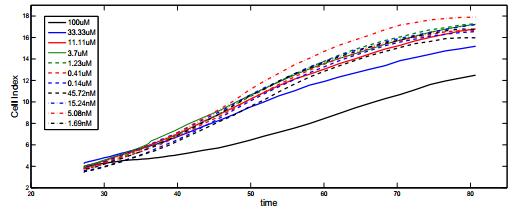
 DownLoad:
DownLoad: 